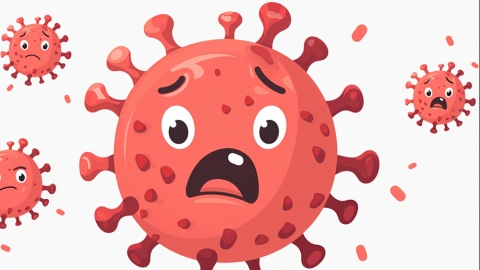How is HIV testing done?
Generally, HIV can be detected through methods such as rapid antibody testing, enzyme-linked immunosorbent assay (ELISA), combined antigen-antibody testing, nucleic acid testing, and Western blot testing. If experiencing any discomfort, timely medical consultation is recommended. Detailed analysis is as follows:

1. Rapid Antibody Testing
This method uses colloidal gold immunochromatography technology to detect HIV antibodies in blood, saliva, or urine. It is simple to operate and does not require specialized equipment, with results available within 15-30 minutes. It is suitable for initial screening, use in primary healthcare settings, or self-testing at home. However, there may be false-positive results, so positive results must be further confirmed. The window period is approximately 3-12 weeks after infection, and testing at least 4 weeks after a high-risk behavior can provide preliminary exclusion.
2. Enzyme-Linked Immunosorbent Assay (ELISA)
This is a commonly used initial screening method in laboratories. It detects HIV antibodies through antigen-antibody specific binding reactions and has high sensitivity and specificity. Venous blood needs to be collected, and the testing process is standardized, with results typically available in 1-3 days. It is a routine initial screening method used in hospitals and disease control centers. The window period is the same as antibody testing, and positive results require confirmation through a confirmatory testing process.
3. Combined Antigen-Antibody Testing
This method detects both HIV antibodies and viral core protein antigens, shortening the window period to 2-6 weeks after infection, allowing earlier detection of infection compared to antibody-only testing. It is suitable for testing more than 2 weeks after a high-risk behavior, especially for early screening. The sample used is venous blood, requiring laboratory processing, and offers high accuracy.
4. Nucleic Acid Testing (NAT)
This method directly detects viral nucleic acids and has the shortest window period, allowing diagnosis before antibody production. It is suitable for early screening after high-risk exposure, such as occupational exposure, suspected acute infection, or as a supplementary test when initial screening results are inconclusive. Venous blood must be collected, and the procedure requires high technical expertise and is relatively expensive. Results are usually available within 1-3 days and is considered one of the "gold standards" for early diagnosis.
5. Western Blot Testing
This is a confirmatory test used to confirm positive results from initial screening. It determines the result by detecting HIV-specific protein bands and has extremely high specificity. It is only performed after a positive initial screening result, requires specialized laboratory processing, and a positive result confirms the diagnosis. Negative or indeterminate results require follow-up testing combined with clinical evaluation.
Different testing methods have their own advantages, disadvantages, and appropriate applications. The choice of testing method should be based on specific circumstances, such as the suspected stage of infection and testing objectives.










